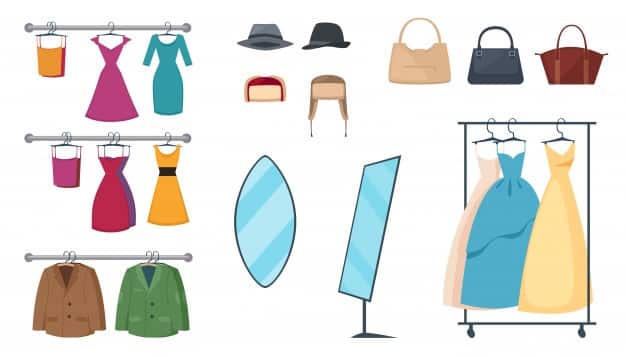There is a long-standing debate about whether a man is rational or emotional. At the core of behavioral economics is the idea that we are not always rational beings. Our day to day activities is subjected to passion and imagination. So, man’s consumption or buying attitude is also relating to his/her internal feelings and cultural background. In a highly communicated world, there exists an opportunity to create a closer relationship between customers and companies. Behavioral economics, a relatively new field of research has grown over the last three decades. However, it seems to be ideal for marketers to improve customer experience.
What is behavioral economics?
Is psychology playing a vital role in the consumer decision-making process? According to rational choice theory, when humans are presented with different options under scarcity, they would choose the option that maximizes their individual satisfaction. They are make-up of the situations. As a product of circumstances, they will cope with the situation and adjust with the material conditions that they are living. This concept believes that people, given their likings and constraints, are capable of making rational decisions by successfully weighing the costs and benefits of each option available to them. The ending choice made will be the best choice for the individual. The sensible person has self-control and is firm by emotions and external factors and, hence, knows what is best for him. In contrast, behavioral economics clarifies that humans are not rational and are not sufficient for making good decisions.

In brief, behavioral economics is the study of human psychology into the analysis of the decision-making behind an economic consequence, such as on what basis a consumer buying one product instead of another. Despite the logical dispositions and scientific outlook, man’s economic actions are determined by the socio-psycho cognitions and emotions. The decision of British people to exit from the European Union is a classic example of how behavioral economics stirring the people towards a massive decision. It was influenced by gut choices, as opposed to logical decision making. Emotions take part in shaping our economics choices, and, in fact, nudge theory tells us that consumer decision making is 30 per cent rational and 70 per cent emotional.
What is nudge economics?
In order to improve commitment, marketers have to understand that customers are human beings whose purchasing decisions are strongly influenced by emotions. Behavioral economics can deliver valuable visions for vendors by helping them to identify behaviors and adapt to customers’ unreasonable biases and emotional demands and needs. Nudge marketing relies on a one-dimensional cognitive model of consumer behavior. Along with behavioral economics, nudge theory also originated, the field of motivational psychology has also made vast steps over the past decade in the understanding how to motivate and strengthen consumers to make the right decisions for themselves. Without reducing the number of choices available, marketers can change someone’s behavior in a very easy and low-cost way. So nudge is a method using to change customer behavior. Nude economics is based on encouragement and enablement. It rejects direct instruction or enforcement.
As a part of behavioral economics, nudge theory has discovered its own place in marketing. It avoids traditional enforced changes and practices of nudge techniques. For example, if you want to teach cleaning the room to a child, you instructing a small child to tidy his/her room. Whereas in the nudge technique, playing a ‘room-tidying’ game with the child.
How nudge theory at work:Customers who came across a tasting booth with a limited selection of (8 juice bottles) were considerably more likely to buy a bottle of juice versus those who had visited a booth with a wide selection (25 varieties of juices). When there are too many unfamiliar options, customer confidence in their selection is weakened, thus they avoid making a decision together.
Sometimes, nudge theory may be far better than behavioral economics because it will cover almost every field of human life.it can be applied to virtually any type of human relationships where the modifications of people’s thinking and decision-making may be beneficial for those people, and to wider society and the planet as a whole. However, behavioral economics has been playing a significant role to change the buying decisions of a shopper. Here, I would like to share important takeaways from behavioral economics that can help marketers improve the relationship between companies and their customers:
1. Social evidence or acceptance: customers buying behavior depends on other people’s opinions. If a product lost to build good public opinions, the customer wouldn’t like to buy that product. So, customers look to other people for information on what to buy or what service to use. Buyers might make a decision based on cultural and social norms in order to gain acceptance by others. While habitual mouth to mouth words can increase your customer base, internet reviews (such as Amazon, eBay, Facebook) are also vital in serving as social evidence for customers. Many of the consumers trust online reviews as much as individual recommendations. This bandwagon psychology has immense effects on customers buying attitude. Hence, marketers should concentrate on customer feedbacks and promoting positive reviews in order to provide social evidence.
2. Loss aversion: it is better to retain money than gain money. That is, consumers are willing to take risks and challenges in order to avoid losing things than to chase gaining things. To understanding the emotionality behind the risk-taking is significant to improving the customer experience. From a psychological point of view, losing is twice the amount of the pleasure of gain. Therefore, marketers can highlight in a way that when a customer consuming a product, he will be out of the threat of loss.
3. Choice overload or decision making paralysis: when a salesperson presented too many options before a consumer, they become bewildered and it leads to unrealistic expectations, decision-making paralysis, and unhappiness. So, offering fewer choices to consumers can increase sales. The juice bottle story is a typical example of this type ( see, how nudge theory at work)
4. Endowment effect: In behavioral economics, the endowment effect defines a circumstance in which an individual places a higher value on an object that they already own than the value they would place on that same object if they did not own it. For instance, a person’s father owned a typical brand of the scooter; his son would have an emotion with the same brand and place a higher value on that object. When an individual gives emotional value to an item, the endowment effect will take place.
5. Decoy effect: Choices often occur relative to what is on offer rather than based on absolute preference. When a consumer buying a product, his/her preferences may change when introducing a third choice. It is called ‘asymmetrically dominated choice. For example; imagine you want to buy a television and the seller displays you two models; Television A that has relatively less feature but gettable in a low price and television B that, on the other hand, has more features but is, therefore, more expensive. The decoy effect will come to play when the seller shows you the third television; television C has more features than A but still a lot less than B and is only marginally less expensive than television B. with these comparisons in mind, television B stands out as being by far the superior option and deal.
6. Anchoring or irrational value assessment: Consumers will trust heavily on the first piece of information offered, and use it as a reference and standard for other decisions from that point on, whether it makes sense or not. Anchoring is based on insignificant information, such as the purchase price of a product or its features. Marketers can present a high price for one option that can influence subsequent consumer purchases even if similar products will get on a lower price. Here, value is often set by anchors or imprints in our minds which we then use as metal reference points when making decisions. Once you get an idea from an irrelevant source, it is difficult to get rid of from it.
The field of behavioral economics integrates visions of psychology and economics and offers some valuable insights that individuals are behaving according to their unconscious and subconscious commands. That is, individuals are not behaving in their own best interests. Behavioral economics provides a structure to understand when and how people make errors. Customary economics use these suppositions to predict real human behavior. Behavior economics enquiring about the decision errors taken by the human mind and studies, how’s and whys behind the decision –making the process. Marketers should study the consumer mind and the illogicality of the human decision-making process will be important to creating winning strategies or product features to test in the market. For example, today, marketers widely used such terms as green products or bioproducts; they know the people are more likely to back to nature than using a synthetic product. So, it is easy to market a product, when you claim it’s a bio-product.
Create your business strategies by analyzing the application of behavioral economics. It suggests ways how marketers can restructure environments to facilitate better choices.

Comments
Post a Comment